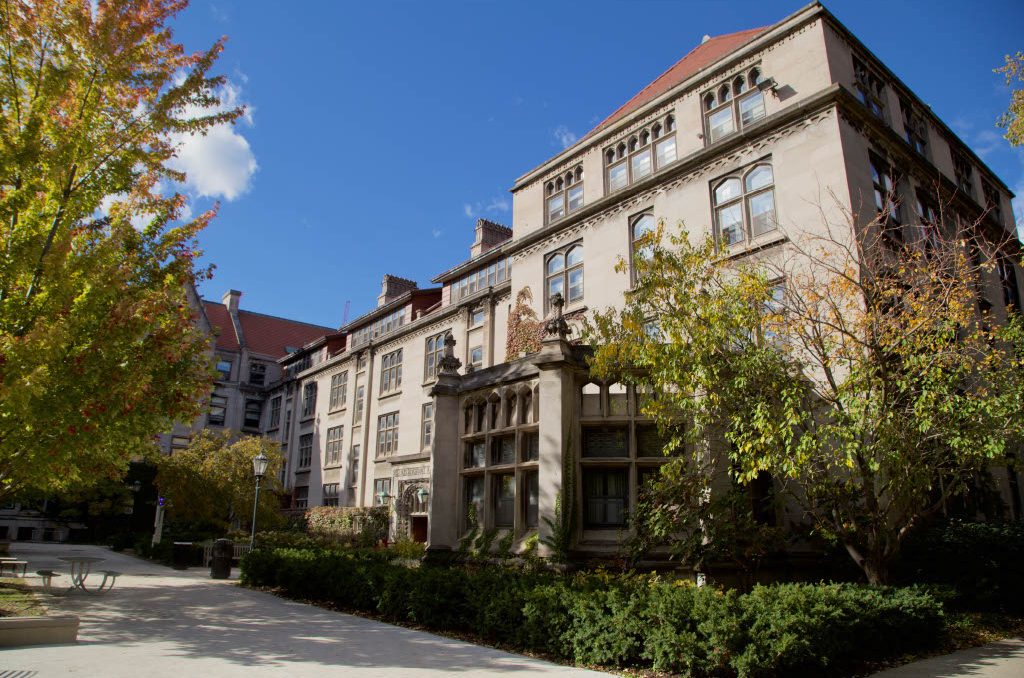As usual, when organizations try to promote awareness of Palestinian issues, someone claims that those who support Palestinians are neglecting the rights of others. In Mr. Weissman’s article, he does precisely this, making numerous accusations that are unfounded, and they must be addressed. He first starts by insinuating that all the sponsors of Palestine Awareness Week “wish for the state and people of Israel to disappear” because of the traditional depiction of Palestine from the British Mandate era on the Reynolds Club banner. I am actually happy he raises the issue because it is particularly interesting in light of the political process that Palestinians and Israelis have been engaged in intermittingly over the past decade. It involves the notion of identity and who gets to define its foundations.
By referring to the occupied territories as “disputed,” Weissman does that which he purports to avoid, which is not recognizing the other side’s status. He ignores international recognition of East Jerusalem, the West Bank and Gaza as occupied territories. By toting the Israeli government’s rhetoric on the matter, he also leaves a vague picture of how Palestinians should represent “their land.” After all, according to him, there is Israel, and then there are the disputed territories.
Is it wrong for Palestinians to use the historical map as a source of national pride when it is still uncertain as to what the final borders of a future state of Palestine, if it ever does reach fruition, will be? If so, then how are Palestinians supposed to think of themselves? If they refer to 1967 borders, then the Palestinians (not including Palestinian-Israelis) should identify with East Jerusalem, the West Bank, and the Gaza Strip. However, if Palestinians created such a map, many Israeli sympathizers would be offended by the supposed lack of recognition of Jerusalem as the Israeli capital. For the record, East Jerusalem and surrounding Palestinian land have been illegally annexed as part of the capital of Israel.
Therefore, should Palestinians identify with only the Gaza and West Bank? Even if they wanted to, this would be impossible since it is still uncertain as to how much of the West Bank the Palestinians will ever receive back from Israel, which wants to continue maintaining control over illegal settlement blocks and even the eastern Jordan Valley in any future agreement. The official maps of the Israeli Foreign Ministry still refer to the West Bank by the biblical names of Judea and Samaria and to the settlements as Israeli communities. If these areas are Israeli land, then again the question is raised as to what Palestinians should consider as their homeland when depicting national symbols. Mr. Weissman fails to offer an alternative to the image depicted in the banner.
Despite all this, one thing that Palestine Awareness Week seeks to promote is that Palestinians are not simply non-Israelis in the Holy Land. The events discuss the Palestinians’ plight in light of the failure of the political process and the perpetuation of the military occupation in Palestinian areas. Hundreds of thousands of Palestinians are refugees who were displaced from their original homes in what is now Israel. This includes the over four hundred Palestinian villages that were systemically destroyed during the process that the Palestinians commemorate as the Nakba, or catastrophe, otherwise referred to by Israelis as the war of independence.
One can therefore see the quagmire the Palestinians are in when it comes to their identity. It may seem a matter of semantic bickering, but the implications are significant. By denying Palestinians their right to identify with the land that either they or their families lived in before it was divided nearly 60 years ago is an injustice that will not lead to peace. I agree that tolerance and respect should be guiding moral principles in a complex world of diverse opinions and ideas. However, another principle that should apply to resolving political conflicts is the acknowledgment of historic injustices committed against one entity by a more powerful one.
It is only after the original suffering and disenfranchisement of the Palestinians is recognized that Israelis and Palestinians can take a further step to peace. The peace and reconciliation committee in South Africa was necessary in order to strengthen the trust between Afrikaners and the blacks who were oppressed under Apartheid. A similar process in the Holy Land would facilitate a dialogue on both sides to come to terms with the new realities on the ground and the existence of both peoples in one land. For this to succeed, it will have to include narrative of the role the creation of Israel played in the displacement of Palestinians. This way, such icons as the map of Palestine (from the mandate period) will not serve to stir controversy, but rather to manifest the Palestinian experience.







